Manufacturing Process
The more attention it requires,
the deeper the tea tastes


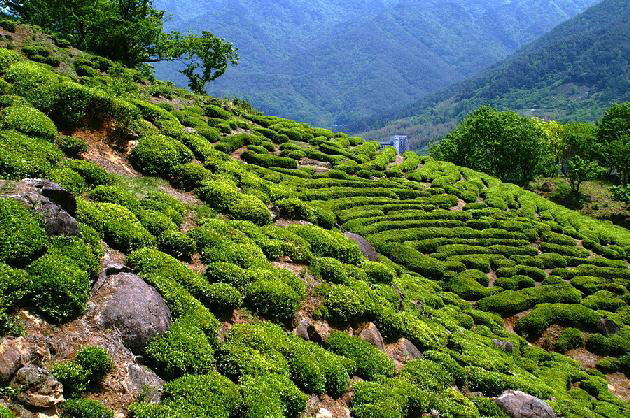
Tea trees with small leaves in Korea grow well in an area with a warm annual average temperature of about 10 ℃ or higher and a high average annual precipitation of more than 1,500mm. Korea has a continental climate with severe cold in winter and a very large temperature difference during the day, so the northern limit latitude where tea trees can grow in a natural state is about 33.35 in the northern latitude. Currently, tea plantations in South Korea are located in Gimje, Okgu, and Namwon in Jeollabuk-do, and southern parts of Hamyang, Milyang and Ulsan in Gyeongsangbuk-do. Most of tea production is made in Gyeongnam, Jeonnam, and Jeju.
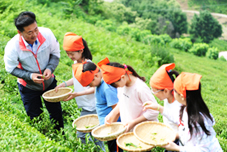
Tea leaves are usually collected from the end of April to the end of May. Depending on the time of harvesting, tea leaves are divided into Woojeon, Sejak, Jungjak, and Daejak. To pick one or two nodes of budding tender leaves in the morning, soaked with the night dewdrop is the best, to pick up during the afternoon is second best, and one does not pick up in the cloudy weather or in the rain. Tea leaves grown from mountains in harmony of sunshine and shade are the best, and those made from bamboo forest among cold dewdrop come next. Those come from the grovel field where the water flows off well are the third and those grown from sandy soil are the fourth.
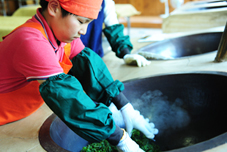
Lay the leaves on the stools and sort out the large leaves, old leaves, stalks, and debris. Wait for the pot to get hot and roast appropriate amount quickly. Keep the fire at a constant temperature, and take them out when they are evenly roasted. If the heat is overly hot, only surfaces are burned, resulting in half-done tea leaves. If the heat is weak, tea leaves lose the green color. If it boils too long, leaves are over-cooked and if too short, they are under-cooked. While well-roasted tea leaves maintain original colors, burned or poorly heated leaves turn red, black, or yellow. Roasting tea leaves enhances the taste and the scent, prevents deterioration or decomposition by removing moisture, preserves tea ingredients for a long time and makes storage and carrying easier.
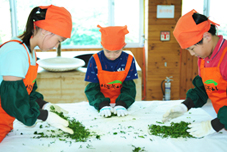
Remove heat from well-roasted tea leaves and rub them on straw mat so that tea ingredients are absorbed. If you look closely at the tea leaves, you can see that it is wrapped with thin film like camellia leaves or gardenia leaves. Rubbing work is to remove the film on the surface of these tea leaves or to cut the surface so that the tea component can easily come into the water when the tea and water are combined. It also acts to push out the juice of tea leaves out of the cells to promote drying. Repeat roasting and rubbing several times while adjusting the temperature of the heat.
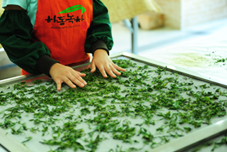
As a preliminary step of drying, separate tea leaves rubbed on the straw mat into individual sprouts. When drying tea in the traditional way, dry it on Hanji in the ondol room or naturally dry it on the shelf.
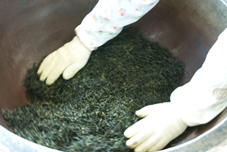
As a preliminary step of drying, separate tea leaves rubbed on the straw mat into individual sprouts. When drying tea in the traditional way, dry it on Hanji in the ondol room or naturally dry it on the shelf.
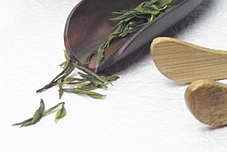
After finishing the last heat treatment process, the tea sorting begins. In a traditional method, use the basket to pick out the crumbs and pack select good tea leaves.

